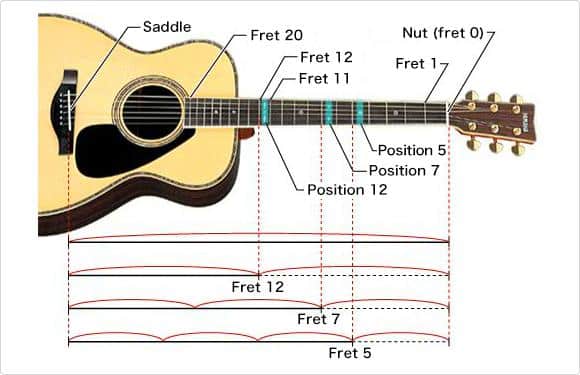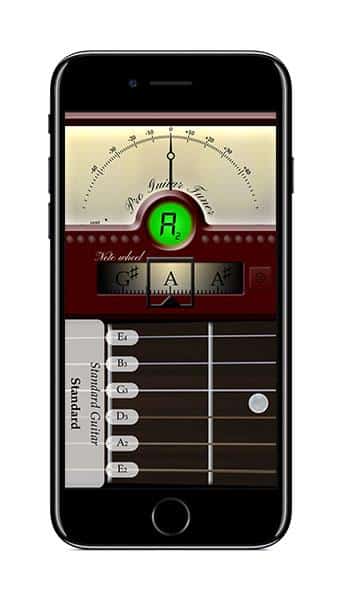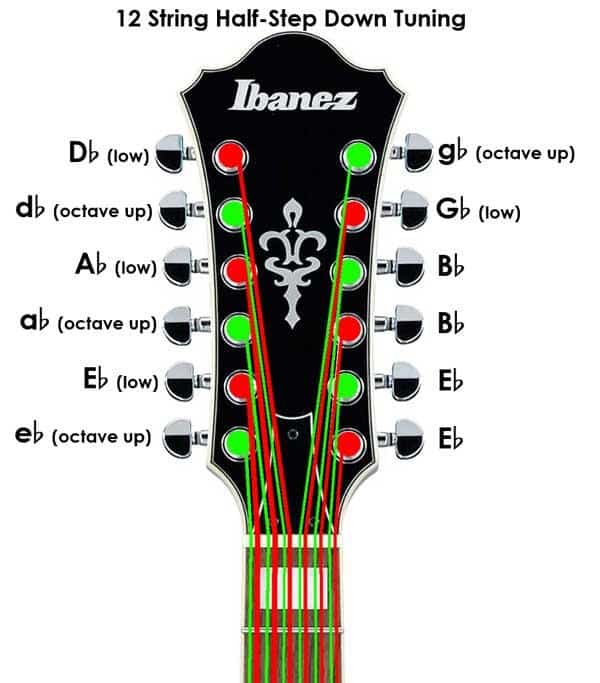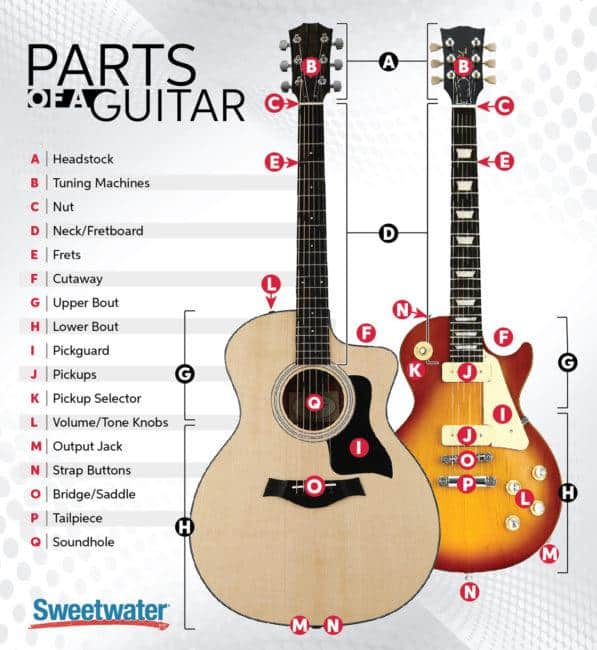Have you ever found yourself mesmerized before a magnificent 12-string guitar, pondering the mystery and magic of its fine-tuned harmony? As a seasoned musician who studied Contemporary Improvisation at the New England Conservatory of Music, I’ve delved into the intricacies of a multitude of stringed instruments over the years and still, my appreciation for the art of 12-string guitar tuning has never wavered.
But here’s a surprising truth that keeps me up at night: mastering the tuner for a 12-string guitar isn’t just about hitting the right pitches—it’s a profound journey towards a symphony of perfect harmony. Now, hold that chord! You’ll find out exactly how this works and more in the upcoming sections.
With my experiences, knowledge, and love for the tuning craft, I’ve put together this practical guide and I invite you to tune in. Let’s demystify the complexities of the harmony machine that is the tuner for 12-string guitar and bring your music to life!
What is 12-String Guitar Tuning
Understanding the Structure of a 12-String Guitar

Expanding on 12-string guitar tuning, the uniqueness of the instrument’s construction plays an essential role. As a transcriber, I’ve had intimate experiences with the construction of various guitars. This insight has been critical in underscoring the intricacies of a 12-string guitar’s structure and its direct relationship with tuning. The intellectual dance of twelve strings organized in courses of two, echoing pairs of low and high octaves, results in a richly-textured sound. To achieve this harmony, each pair must be tuned in unison or octaves. This in turn, renders accurate tuning a bit more complex than a 6-string guitar. Acknowledging that it’s more than just having twelve strings, but about how those strings work together, is pivotal. Thus, understanding such structural uniqueness significantly unlocks the nuances of 12-string guitar tuning.
Why Tune Your 12-String Guitar

In my musical journey as a guitarist, the realization dawned quite early on that playing a stringed instrument isn’t just about strumming the strings. It’s about the intricate practices you undertake to bring out harmony, resonance, and balance.
Is the sound of a guitar just about strumming? Or is there a hidden mantra in the delicate art of tuning? Let’s unravel this puzzle. It all crystallizes into an important concept— stringed instrument tuning.
There’s a certain satisfaction that comes from tuning your guitar properly and feeling each string vibrate perfectly beneath your fingers. But what makes this so important? Why is it crucial to go beyond the mere act of playing to perfect the exercise of tuning a 12-string guitar?
From my perspective, an out-of-tune guitar strays from the essence of the music at its very core. When you make the effort to tune your instrument, you ensure that every single one of your guitar’s 12 strings corresponds perfectly with the others in terms of pitch – that’s what brings out the magical harmonies unique to a 12-string guitar.
As a professional guitarist, I emphasize the importance of tuning as a prerequisite to flawless performance. The subtleties of an optimally tuned guitar may not be immediately discernible to the untrained ear, but trust me, once you develop the sensitivity, untuned performances can sound rather discordant.
That said, keeping your instrument in tune isn’t merely an exercise in professionalism; it’s a means to a more enriching musical experience. And that, dear readers, is why we tune our 12-String guitars.
How to Tune Your 12-String Guitar
Using Automatic Tuner

Transitioning from the basics of tuning your 12-string guitar, let’s delve into using an automatic guitar tuner. Having tried numerous methods, I’ve always been impressed by the accuracy of automatic tuners. They’ve proven to be a quick and reliable method to attain musical precision in tuning my 12-string guitar. The utility and efficiency of these devices can’t be overstated. An automatic tuner for 12-string guitar is designed to detect the pitch of each vibrating string, and guide you in adjusting your guitar to the correct pitch effortlessly. It simplifies the tuning process, saving valuable practice time.
From my personal experience, using an automatic tuner for tuning my guitar has indeed fostered a more rewarding guitar-playing journey, contributing to finely tuned music and seamless creative expression. It’s a strategy that blends pure convenience with accurate results – truly a win-win!
Tuning Through an App

After discussing automatic tuners, let’s take a step into the digital era with tuning 12-string guitar apps. The rise of digital technology in music has made tuning incredibly affordable and accessible. It’s considerably simpler to tune your 12-string guitar using online guitar tuner apps when you’re on the move, ensuring you’re always ready for a sweet-sounding session. What I particularly appreciate about these apps is their convenience and reliability.
With a touch of your screen, the tuning process becomes less complicated. I often utilize these apps to maintain standard tuning or experiment with different tunings based on my mood or the song. In my experience, a well-calibrated app can rival traditional tuning forks and automatic tuners in accuracy. However, using an app requires an attentive ear and some practice. It’s a rewarding skill to develop with an immediate and positive impact on your music.
Moving forward, let’s discuss situations that might require you to retune your 12-string guitar.
When to Retune Your Guitar

As we delve deeper into the specifics of tuning a 12-string guitar, the question on everyone’s mind is: How often should you retune your guitar? Allow me to let you in on a secret that has helped me throughout my years as the editor of ‘Acoustic Guitar’. Here’s the trick – it’s not about time, it’s about tone. That’s right; the timing of guitar retuning is less a matter of the clock and more a result of the signals your guitar sends.
In my experience, the need for retuning is often telegraphed in small cues your guitar gives you. The flags might be subtle, but to the attuned ear, they’re as loud as thunder. For instance, you might notice a pronounced twang when strumming certain chords, or an unsettling buzz that wasn’t there before. These perceptible drops in sound quality are your guitar’s S.O.S signals, begging you to retune it.
Indeed, I’ve found that the secret to good guitar tuning techniques is not about adhering to a strict retuning schedule, but rather about listening. It’s about paying attention to the nuances of your guitar’s voice, about respecting those tiny alterations that can transform an average performance into a memorable one. You see, a well-tuned guitar has the capacity to illuminate notes with an ethereal vibrancy that no fancy gadget can mimic or accomplish. And I’ve come to believe that this respect for your instrument and its voice is instrumental in distinguishing good guitarists from great ones.
So, to all you aspiring guitar samurais out there, I urge you not to be a slave to time or routine. Instead, foster a deep, intimate connection with your guitar. Listen to its voice, understand its mood swings, and retune it when needed. The reward will be beautifully harmonious melodies that will not only move you but also your audiences.
Which Parts to Use for Tuning

In my life-long musical journey of tuning guitars, I’ve come across a multitude of different types and models. Each one possesses a unique quality that makes it suitable for a certain context. After all, it’s all about defining your sound.
While you are tuning your 12-string guitar, there are essential tools that should be your guiding compasses. Although the initial thought is to grab an automatic tuner, the professionals understand that a single device cannot tune all guitars. Did you know that? There’s an entire universe of tools waiting to perfect your 12-string guitar. Let’s journey into this cosmos of tuners.
For an ultimate precision, embracing a chromatic guitar tuner is something I’d always recommend. I remember the first time I was introduced to this device, it literally allowed me to achieve those perfect pitches I had been dreaming of. Then, newer methods emerged. Pulses and wavelengths of my guitar caught by a microphone now could be transferred into my computer. Yes, you heard it right. Guitar tuning via microphone became a reality, giving a whole new perspective to guitar tuning.
An important part of any 12-string guitar is its tuning pegs. The small, usually overlooked pieces have a significant impact on your composition. That’s where acoustic guitar tuning pegs come in. These adjustable screws allow you to alter the string’s tension, thus controlling the pitch. I find locking tuners pretty fascinating too especially the ones made for the 12-string guitars. For me, the precision that locking tuners for 12-string guitar offer is just unparalleled.
The story does not end here, as over time, tuners might lose their efficiency and would require replacements. Finding compatible replacement guitar tuners can be a daunting task, but trust me, it’s worth the effort.
Last but not least, there’s an underrated hero that could make your tuning process a breeze. The guitar string winder, a simple, yet ingenious device that has saved me hours of twisting and turning.
It’s a fascinating world, isn’t it? The art of guitar tuning is a journey that I am still exploring. As an experienced musician, I am continuously learning and seeking ways to achieve that perfect pitch, which is only possible because of these marvelous little tools.
FAQs
What is a 12-string guitar?
Why is tuning a 12-string guitar different?
How do I tune a 12-string guitar?
What are some tips for tuning a 12-string guitar?
Conclusion
How can the science of tuning and the art of playing a 12-string guitar intertwine to create beautiful music? Let’s wrap up this melodious journey. A 12-string guitar requires careful tuning and significant understanding of its complex structure. As I have found through years of writing, playing, and teaching, it transcends the realm of being merely an instrument, turning into a cherished companion in my ongoing musical journey.
To unlock its full potential, you need to know why and how often you should tune it, along with arming yourself with a keen understanding of the different techniques and tools available, such as automatic tuners or apps. The sound of each string when perfectly attuned, creates an unparalleled harmony – a combination of scientific precision and splendid artistry.
In conclusion, keep exploring, learning, and fine-tuning this beautiful relationship with your 12-string guitar as you navigate your musical journey. Remember, no string too loose or too tight – that’s the real pitch perfect.
